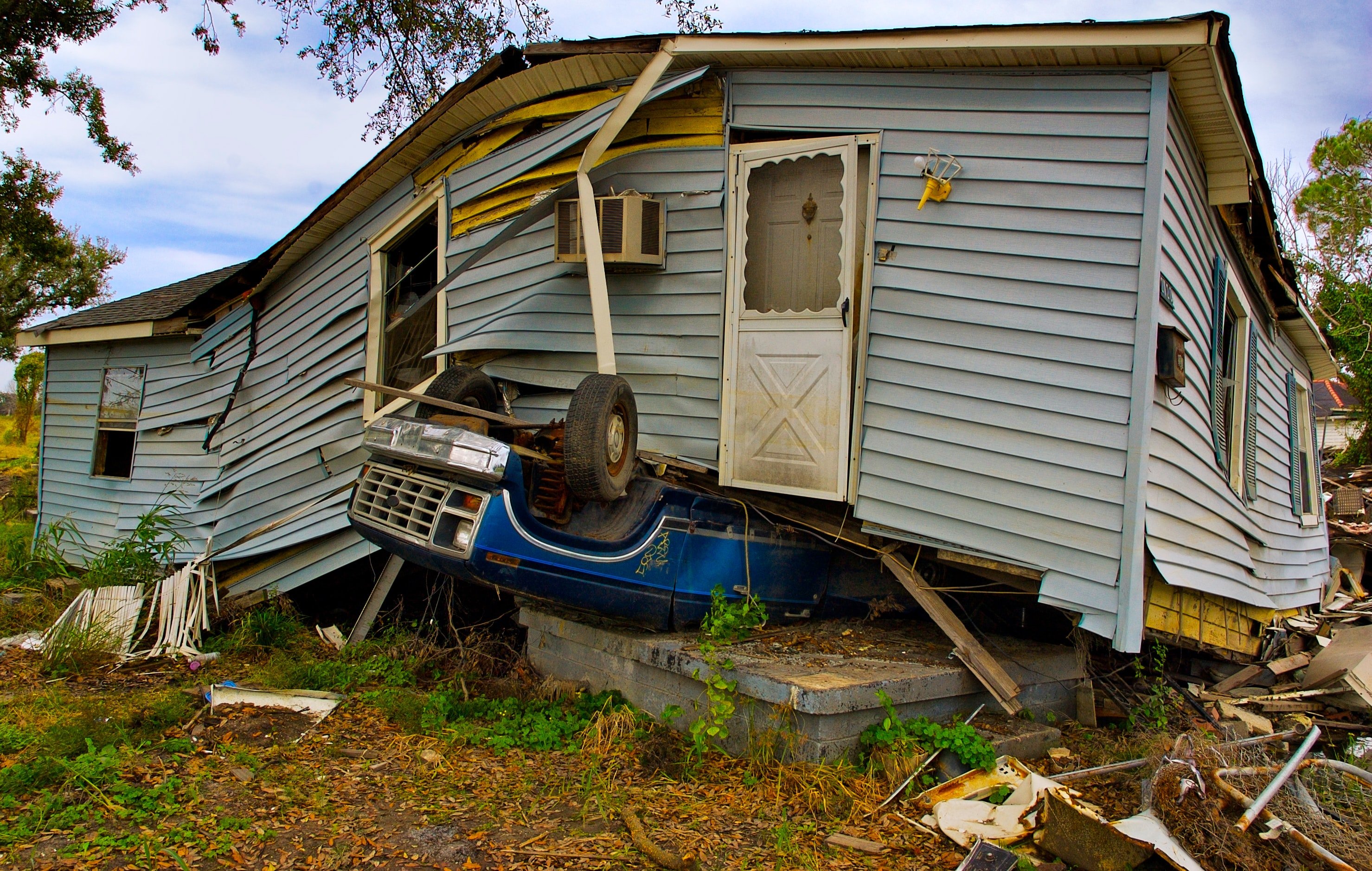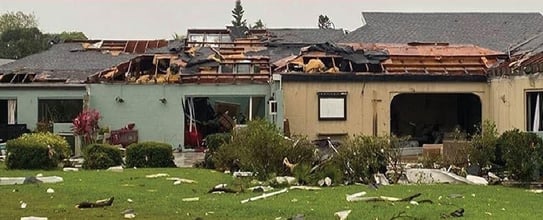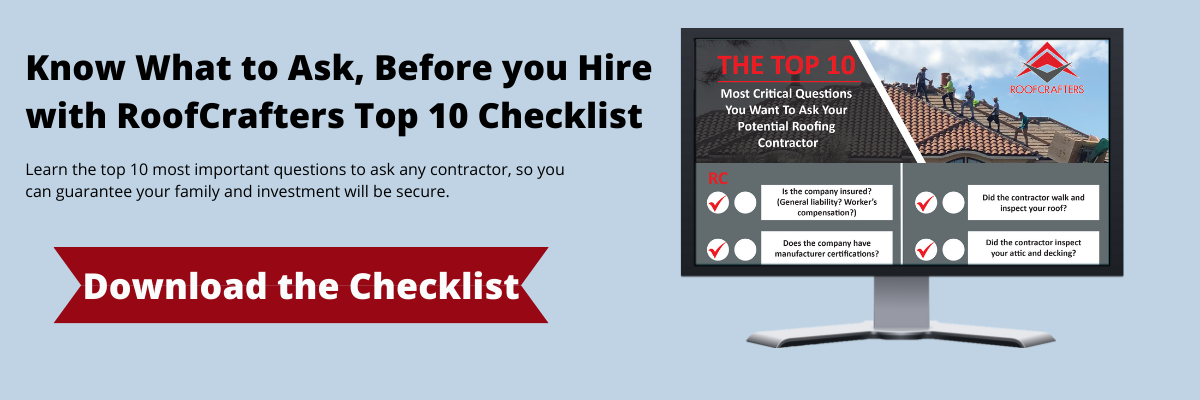How Do Hurricanes Affect Your Roof?
June , 2025 | 6 min. read

As a Florida native, I’ve learned there are usually two types of homeowners when a hurricane’s on the horizon:
- The ones who pack up and head north to stay with friends or family
- The ones who hunker down, crank up the generator, and host a full-blown hurricane party with their neighbors
So… what’s your move?
Personally, I’m more of a hurricane party type of gal. But as a homeowner, I never take chances with my roof. Even if I’m staying put, I always take the right precautions to make sure my home can stand up to the storm.
Because here’s the thing: even if you’ve been through a dozen hurricane seasons and feel like a pro, you’re not immune to the wrath of Mother Nature. RoofCrafters has seen firsthand the damage hurricanes can do, especially in the wake of big storms like Hurricane Ian, which swept across Florida’s entire west coast not too long ago.
We’ve seen it all when it comes to hurricane roof damage, and while we can’t stop the storm from coming, we can help you understand how to protect your roof. In this article, we’re breaking down exactly how hurricanes affect your roof, from wild winds and pounding rain to hail and flying debris.
How Do Hurricanes Affect Your Roof?
Hurricanes affect your roof in many different ways. Some of the factors that could ultimately lead to damage include:
- Wind
- Heavy Rain
- Hail
- Airborne debris
Wind

When it comes to hurricanes, wind is the public enemy number one for homeowners. More than half of all hurricanes cause significant wind damage. Anything over 50 mph is considered damaging wind, and during a major storm, wind speeds can exceed 100 mph.
That kind of force can easily tear shingles off your roof, leaving it vulnerable to water leaks and structural damage. And if the sealant under your shingles is broken, even if they look intact, water can sneak in and wreak havoc.
You might not always spot wind damage right away. That’s why calling in a professional roofer after a storm is a smart move! They’ll know what to look for. If you’re due for a roof replacement, make sure to compare wind resistance across different shingle manufacturers.
If a storm rips off your shingles and the winds are stronger than what your roof is rated for, it’s time to file a claim with your insurance or the manufacturer, depending on coverage.
Signs of wind damage to look for:
- Missing shingles
- Cracked or curling shingles
- Granule loss (check your gutters!)
- Water stains on ceilings or in your attic
Heavy Rain
Heavy rains associated with hurricanes can be detrimental to your roof. Although your roof is designed to withstand and protect you and your family against the elements, sometimes even the most perfectly constructed roofs are no match for Mother Nature. Missing shingles or tiles swept up in the strong hurricane winds allows water to seep deep into the structure of your roof, which will be the culprit of pesky leaks later on.

Even if your roof sustains something small such as cracked or lightly damaged shingles, sadly you’re still likely to suffer from water damage. It’s incredibly important that you have a pre-hurricane season roof inspection to make sure your roof is in good working condition. If it’s not, the effects could be dangerous for yourself and your family.
Hail
Hail? In a hurricane? Yeah, you read that correctly. Although it may seem like hail during a hot summer hurricane is rare, it’s more common than you’d think. Hail is a form of solid precipitation that occurs in strong storm clouds pushed up into the atmosphere at temperatures of 32°F or below, the same range at which snow is possible. It consists of balls or irregular lumps of ice, each of which is called a hailstone.
While it is difficult to assess the full extent of damage from hail to your roof from the ground, some signs can help determine if there could be more damage. If you notice any of the following signs post-hurricane, it’s time to follow up with a roof inspection. It is essential to find an affordable roofing service before minor problems continue to worsen to the point where roof replacement becomes necessary.
The two most common ways hail might damage your roof are:
- Granule loss: An easy way to determine if your shingles have lost granules is by taking a look at your gutters and downspouts. If you find any granules after a hailstorm, chances are the storm has taken a toll on your shingles.
- Shingle cracks: The impact of dense hailstones or strong winds can crack the shingles apart from other damage to your roof. While not all cracks might pose an immediate risk to the overall structure, they can still leave your roof with bare spots that might lead to roof leaks down the line. Cracked shingles also cannot protect your roof from external elements.
Airborne Debris
After a hurricane, you may notice loose debris around your home such as yard waste, outdoor furniture, and so on. This could indicate that something struck your roof during high winds. As hurricanes build and get stronger, tree branches or other fallen debris can land on your roof. Clear debris away as soon as it’s safe to do so to minimize risk and look for characteristics of broken shingle patterns to assess impacts.
Small items won’t cause an issue. Other items such as trampolines, outdoor furniture, and decor may cause serious damage if not properly stored away. In this case, use your best judgment. You may need to have a professional roofing contractor inspect your roof to see the amount of damage. You can file an insurance claim if you have damage from debris on your roof.
Can My Roof Weather The Storm?
If you take the proper safety precautions before hurricane season or the storm itself, your roof will be able to withstand the storm. The one thing that I cannot stress enough is having a preseason inspection conducted as soon as possible. Being proactive and prepared is what will save your roof, and ultimately your home and other belongings.
Be sure to schedule your inspection or any necessary repairs promptly. Finding a qualified contractor in your area may seem tricky, but with our “Top 10 Most Critical Questions You want to Ask Your Potential Roofing Contractor”, finding a roofer you feel most comfortable to complete the job will be a breeze.
In the meantime, feel free to browse through the extensive resources located in our learning center. I recommend reading “Does Insurance Cover Storm Damage to a Roof?” to be better educated about what comes out of your pocket if your roof ultimately does end up enduring damage from the storm.
My name is Cassie, and I’m the Content Manager here at RoofCrafters. I was born and raised in Chicago, Illinois, and made my way out to Florida post-college graduation. I’m incredibly passionate about writing and creating valuable content that helps others with the collaboration of my marketing team. When I’m not working, I enjoy shopping (a little too much), spending time at the beach, and reading!


